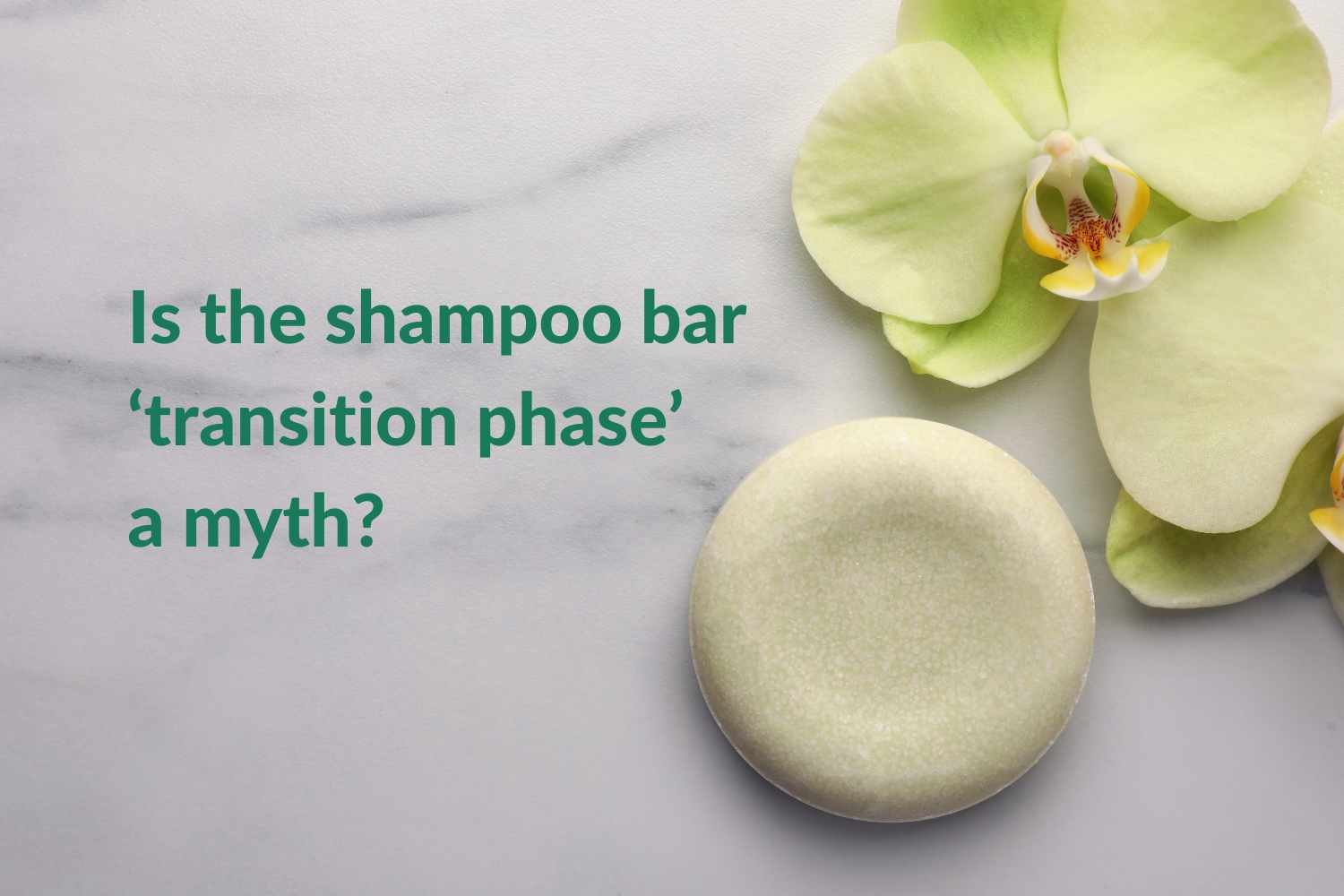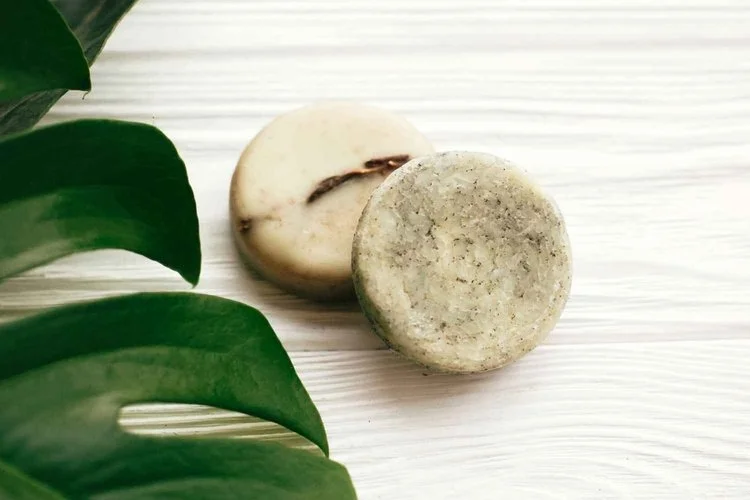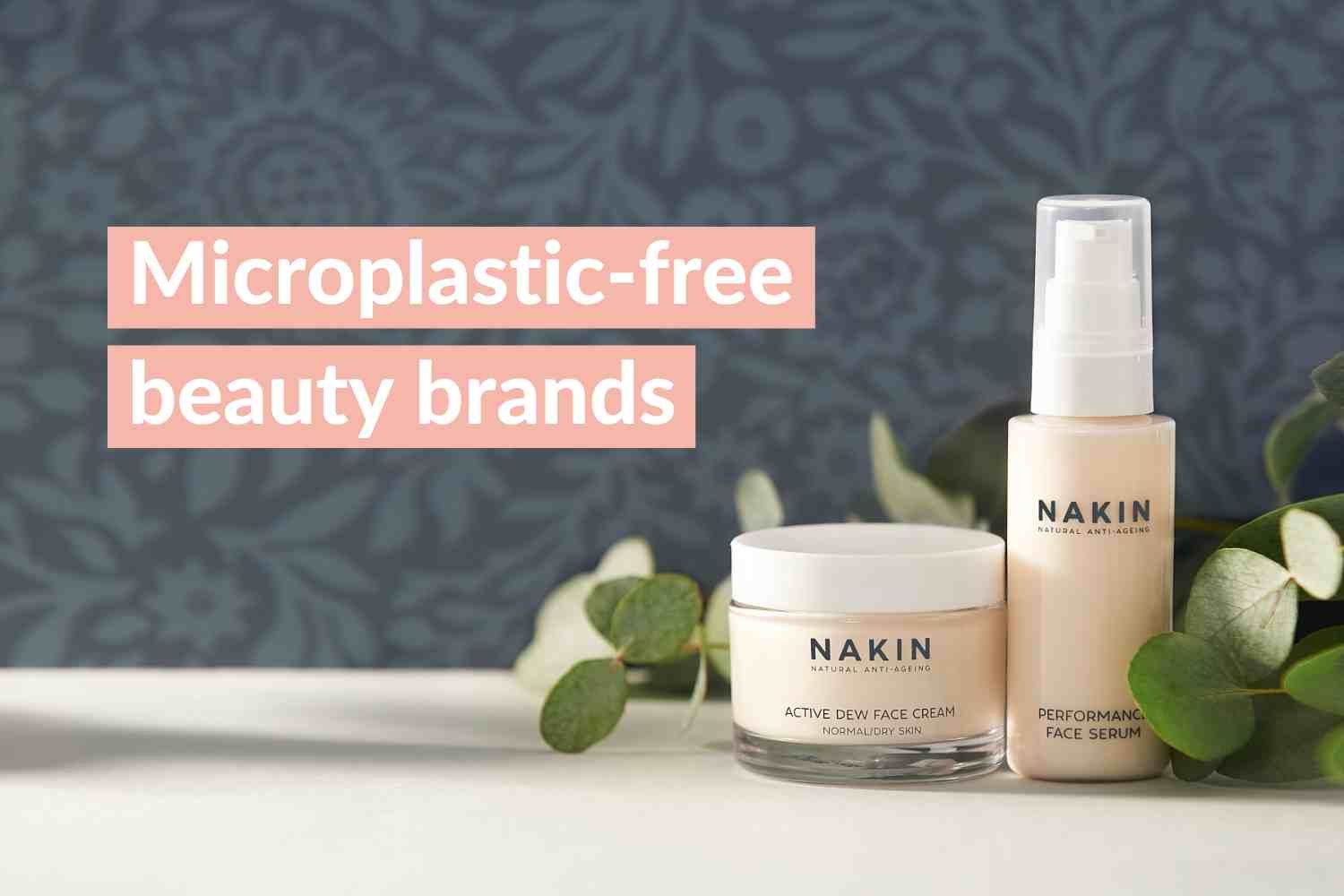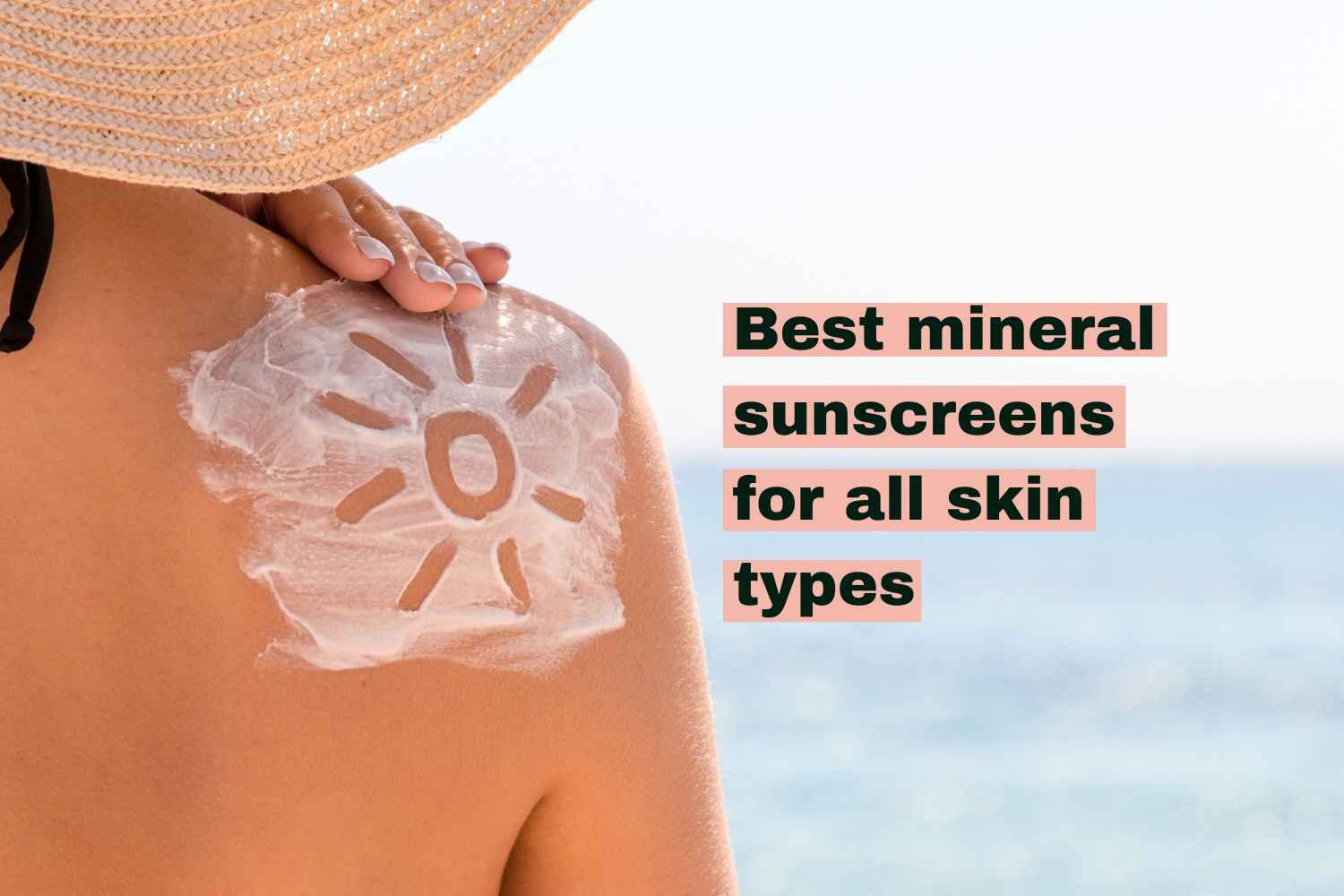How to Avoid The Dreaded Shampoo Bar Transition Phase
Did you know a shampoo bar “transition phase” is a myth?
This guide will tell you everything you need to know about switching to solid shampoo and how to avoid waxy hair in hard water areas.
Did you arrive at this page after a natural shampoo bar left you looking like you mopped a chip shop floor with your hair?
I’ve been through that trauma too, and it was not pretty.
I bet you’re wondering why some people get along wonderfully with shampoo bars, while you look like someone who never showers.
What can I say? Life isn’t fair
…just kidding!
After wasting my money and damaging my hair, I have finally worked out how to tell which bars work and which don’t.
I also realised there is no such thing as a transition phase. That is just a lie brands tell you because their products are ineffective.
As I’m pretty keen on turtles and the ocean, I’d like to help you reduce your single-use plastic by sharing all my research.
This guide to transitioning to a shampoo bar will tell you everything you need to know about solid shampoo ingredients so that you can have beautiful hair, too.
This post has been created as part of a series of eco-friendly living guides, you can view the rest by clicking ‘free guides’ in the navigation menu. All shampoo bar content has been grouped under ‘topics.’
COMING UP:
What is the difference between soft and hard water?
Why do some shampoo bars make your hair feel waxy in hard water?
Why I think transition phases are nonsense
Can soap-based shampoo bars damage your hair?
What is the pH of shampoo bars?
Will apple cider vinegar help the ‘transition phase?’
What ingredients are in soap-based shampoo bars?
Which type of shampoo bars don’t have a transition phase?
How do you know if a shampoo bar contains surfactants?
A list of shampoo bars that work in all water types
1. What is the difference between soft and hard water?
Your water type has an impact on how your hair responds to certain types of shampoo bars. If you are prone to limescale in your appliances (kettle, toilet, shower) then your water is hard.
The difference between soft and hard water is the presence of minerals, mainly calcium and magnesium. The more minerals in your water, the harder it is.
Rainwater is naturally soft. Minerals are added naturally as the water flows through rocks and the ground before ending up in our water systems.
In the South and East of England, water collects higher levels of minerals due to the chalk and limestone. In the North and West where there is granite, the water is much softer.
Soft water tends to have higher concentrations of sodium and sometimes tastes saltier.
You can find out your water type by going to the website of your local water provider.
2. Why do some shampoo bars make your hair feel waxy in hard water?
The reason that some bars leave your hair feeling waxy is that they are literally bars of soap.
Yep, you heard me - there is no actual shampoo in them.
Soap-based shampoo bar makers like to call it “natural shampoo,” but I find this completely misleading.
The bars are made from saponified oils, which is the technical name for mixing oils (like coconut or olive oil) with an alkali to make soap. It’s more complex than that but you get the gist.
“Natural shampoo bars” aka bars of soap do NOT work well in hard water areas, but some people manage okay with them in soft water areas (though research suggests this is not good for anyone’s hair).
If you have hard water, the soap molecules bind to the minerals in the water and leave waxy deposits in your hair. Even after washing it multiple times, your hair will look greasy and straw-like.
If you have soft water, mineral build-up shouldn’t be a problem. If you have problems (which you probably will) it’s due to your hair type and the pH of the bar. There is more information about pH levels and the damage soap can do to your hair in section 4
3. Why I think transition phases are nonsense
When I first switched to solid hair bars, I was comforted by the word “natural” which resulted in me trying two soap-based shampoo bars.
The result of this was I looked like I hadn’t washed my hair for a month.
Feeling desperate, I contacted the brand. They told me I was experiencing the transition phase and that I needed to use an apple cider vinegar (ACV) wash to help my hair “transition” to their bar.
This put me off completely, but I had already bought two of the friggin’ things (and maternity pay sucks so I was determined to see it through).
[My hair looking gross while trying to transition back in 2018]
I gave the ACV wash a go, and one burning eye later, I still had greasy hair.
A quick online search told me that the transition phase could last 3 months which made me want to cry even more than I did when I had vinegar in my eye.
This is where another soap-based shampoo brand told me to use baking soda.
This actually cleaned my hair and for a couple of months I thought that the “no poo” life could be for me instead, but after a few weeks, my hair became dry and started falling out which was not ideal (you’ll see on my pH chart later that baking soda is alkaline).
This is when I gave up and returned to liquid shampoo for a while, until months later I found bars that worked after the first wash.
These turned out to be shampoo bars containing actual shampoo, not soap.
So you see, if you buy a shampoo bar that doesn’t contain soap, there isn’t a transition phase at all because the ingredients (surfactants) are designed to wash your hair.
This leads me to my theory that the famous ‘transition phase’ was invented by soap makers to cover up the fact their products aren’t formulated for hair.
After all, your hair doesn’t actually ‘transition’ or change to a better state.
“Unpopular opinion:
The ‘transition phase’ when switching to shampoo bars was invented by soap makers to hide the fact their products are ineffective on hair.”
4. Can soap-based shampoo bars damage your hair?
Using soap a few times shouldn’t be too much of an issue, however, using it all the time can lead to damaged or brittle hair.
Despite being made from natural oils, soap is alkaline with a pH of around 9-10. It is an anionic detergent that changes the chemistry of the scalp when you use it instead of shampoo.
‘pH level’ refers to how acidic or alkaline something is.
Your hair shaft has a pH of 3.6 and your scalp has a pH of 5.5 which means they are acidic (see the chart I made above if this is confusing or boring).
“When soap comes into contact with hard water it leaves behind harmful alkaline residues in the strands of your hair which combine with the minerals in the water to create calcium salts. These leave your hair tangled.”
This residue builds up the more you wash your hair and eventually, your hair may become damaged.
Using soap products on your hair can lead to:
Cuticle damage
Hair breakage
Frizz
Irritation
Using an alkaline pH product, like soap, on your hair may increase the negative electrical net charge of the hair fibre surface. This then increases the friction between the fibres which is the main source of frizz.
5. What about the pH of shampoo bars?
pH-balanced shampoo bars are much better for your hair because they are acidic, however they are not all formulated the same.
Pretty much all shampoo (liquid and solid) has a pH somewhere between 4.5 - 7. Using a shampoo with a pH higher than 5.5 may still increase friction and cause some frizz, just not as badly as soap.
The brands that have formulated their shampoo bars well, will have added a cationic surfactant (used in conditioners) to reduce the negative charge and reduce the risk of hair becoming tangled from using a shampoo with a pH higher than the hair shaft (3.6).
This is why shampoo is not always formulated well for all hair types.
Some shampoo bars I’ve seen only contain 3 ingredients - an anionic surfactant (like a sulfate), a vegetable oil (like coconut oil) and fragrance.
Better shampoo bars contain multiple anionic surfactants for cleaning dirt, and cationic surfactants to prevent frizz, alongside other ingredients like nourishing hair oils.
It’s also the reason conditioners are necessary for so many people ( although, these are also not made the same).
Some conditioners contain silicones to coat your hair, whilst others are more acidic and focus on detangling it. I have found many conditioner bars to be formulated quite poorly (and I’m working on a post about this right now - sign up for my monthly mailing list to hear when it’s published).
Not everybody struggles with dry or frizzy hair, but if you do, you will probably see a benefit from using low-pH hair products.
6. Will apple cider vinegar help the ‘transition phase?’
Apple Cider Vinegar is often suggested as the solution when you’re struggling to transition to a shampoo bar made of soap.
This is because ACV has a pH of 2-3 (acidic) so the idea is that it rebalances the scalp after you’ve used alkaline soap does make sense.
Unfortunately, while vinegar may help remove some of the build-up from hard water, it won’t necessarily remove the mixture of soap and hard water minerals.
So if you live in a hard water area, it’s not the solution to making natural soap-based shampoo bars work.
And does anyone really want to pour vinegar on their head long term?
Maybe I’m low maintenance but it makes much more sense to choose a bar that is formulated for hair, with hair-friendly ingredients, that needs no extra steps.
7. How can I tell if there is soap in my shampoo bar?
I’m going to help you understand how to read an ingredients list in case you want to avoid soap in your shampoo bars.
It’s quite simple to spot as the main ingredients will end in “—ate.”
Ingredients will start with either “sodium” or “potassium.”
Common main ingredients in a soap-based shampoo bar:
Sodium Olivate (olive oil),
Sodium Cocoate (coconut oil),
Sodium Sunflowerate (sunflower oil),
Sodium Shea Butterate (shea butter),
Sodium Castorate (castor oil),
Water (aqua) & a preservative,
Glycerine.
8. What type of shampoo bars don’t have a transition phase?
If a shampoo bar does not contain soap, then there won’t be a transition phase. It really is as simple as that.
If your hair is waxy after using a shampoo-based bar (and it was in good condition before) this means it could be the wrong product for your hair. I have a separate blog post exploring the reasons shampoo bars aren’t working.
What is in a shampoo-based bar?
The ingredient that cleans your hair in a shampoo bar is called a surfactant and it increases the wetting properties of a liquid, making it spread and wet more easily.
It is the cleaning ingredient, also used in liquid shampoo, that removes dirt, oil, grease, and mineral deposits, from your hair (though if there’s a lot of build-up, you will probably need clarifying shampoo to get back to baseline). Surfactants can be naturally derived or synthetic.
Shampoo bars that use surfactants are effective in hard water. Unlike soap-based bars, they don’t leave a greasy, waxy, soap scum residue and you should look clean the first time you use it.
As you know, hair type and thickness can vary dramatically. A good shampoo bar maker will use multiple surfactants (at different strengths) to create the perfect pH-balanced bar for specific hair types.
There is no transition phase when you switch to a surfactant-based shampoo bar and no need for an apple cider rinse (hooray!).
Other names for shampoo bars that contain surfactants:
Shampoo-based bars
Syndet bars (synthetic detergent)
Low poo bars (sulfate-free)
Full poo bars (containing sulfates)
I know I know, ‘poo’ is a weird choice when talking about cleaning hair - someone really should come up with a better name.
9. How do you know if a shampoo bar has surfactants?
While it’s easy to recognise the ingredients in a bar of soap (I listed them in section 6 if you missed it). Surfactants have a more complex name.
The majority of the bars I have seen and tried use one or both of the surfactants (usually at the top of the list):
Sodium Cocoyl Isethionate
Sodium Coco Sulfate
These are usually sourced from coconuts so can be called plant-based ingredients, but they have gone through a chemical process meaning they are also synthetic.
These are mild ingredients, but how effective the shampoo bar is will depend on the entire formulation, the manufacturing quality, and how many surfactants are used.
You might think fewer ingredients are better, but that isn’t always true.
To avoid being irritating, a shampoo bar may contain multiple surfactants which increases its cleansing power without making it harsh.
Think of it like this, a small amount of 3 ingredients that work well together, is milder than a large amount of one.
Common surfactants which are derived from coconut or palm fruits and are used in shampoo bars:
Sodium Cocoyl Isethionate
Sodium lauryl Sulfoacetate
Sodium Coco Sulfate
Decyl Glucoside
Lauryl Glucoside
Coco Glucoside
Cocamidopropyl Betaine
Disodium Cocoamphodiacetate
Disodium Lauryl sulfosuccinate
You also occasionally find shampoo bars with sodium lauryl sulfate (SLS), usually from big brands like Lush.
10. Which shampoo bars work in hard (and soft) water?
I’ve spent the last few years reading shampoo bar ingredient lists and testing out as many bars as I can.
I’m lucky enough to have readers in both the U.K. and the U.S.A. so I’ve created a list of shampoo bars that work in hard and soft water areas (because they’re soap-free).
If you’re unsure which ingredients suit your hair type then you might find this useful: which shampoo bar suits your hair type.
CLICK HERE:
Have you made the switch to shampoo bars yet?
Share your experience in the comments below (even if it is just to reassure me I’m not the only person who walked around looking like I never washed for months).
If you found this post informative, please tap the share button below. As a work-at-home mum who is boycotting Amazon, every share means the world to me. You can also support my content by buying me a coffee or following me on Instagram. Thanks for being here - Sophie <3
TAP TO SHARE WITH YOUR FRIENDS:




![[My hair looking gross while trying to transition back in 2018]](https://images.squarespace-cdn.com/content/v1/5bb8cd5aa09a7e4c80cb9fd8/1592313709451-HJWJVZF7LCRH7W6KEJKC/transition+phase+shampoo+bar+hard+water)















